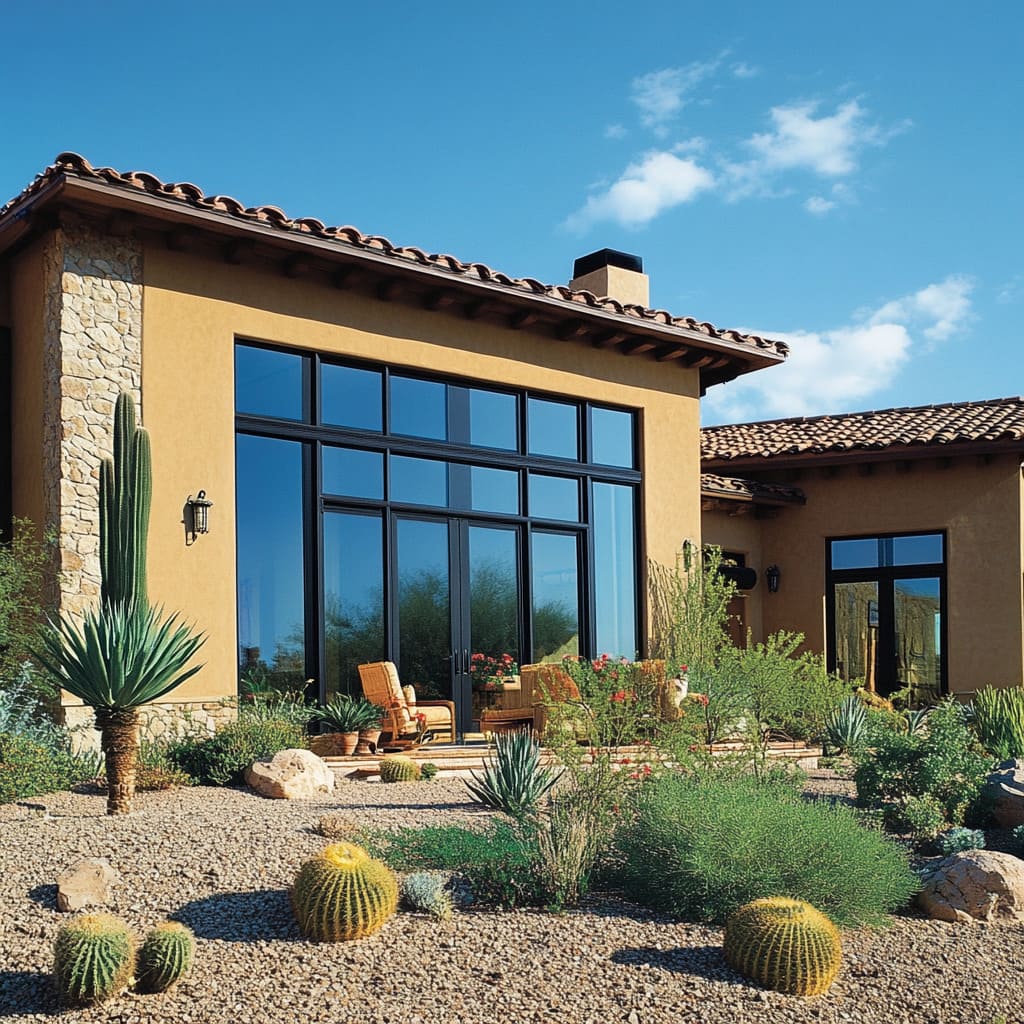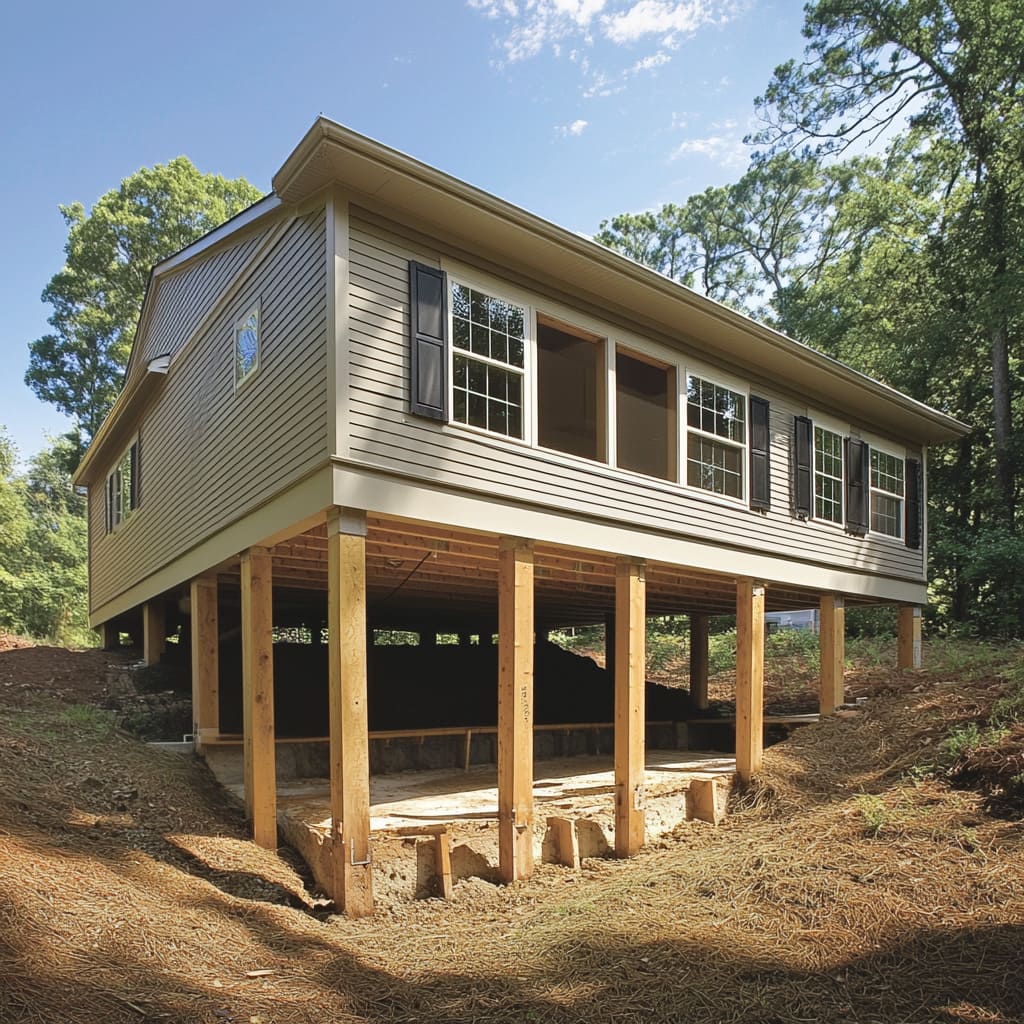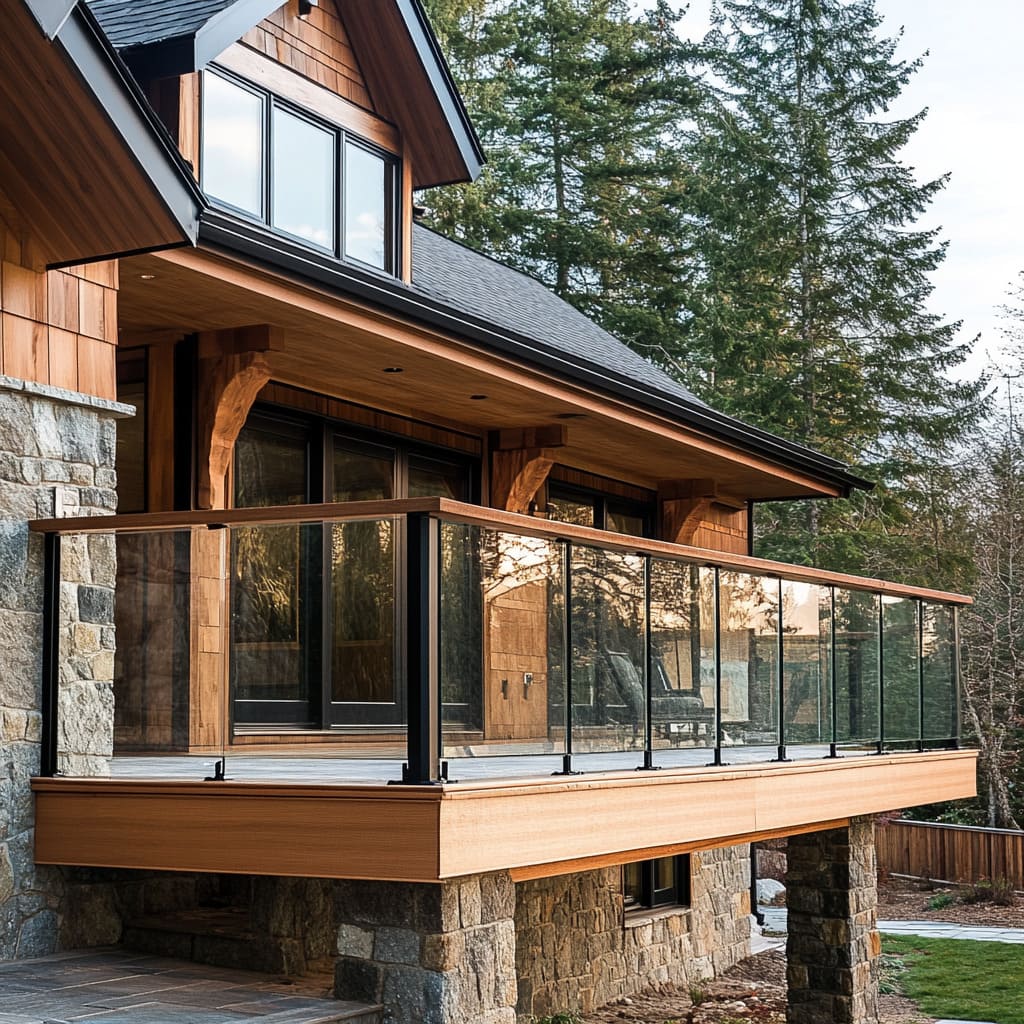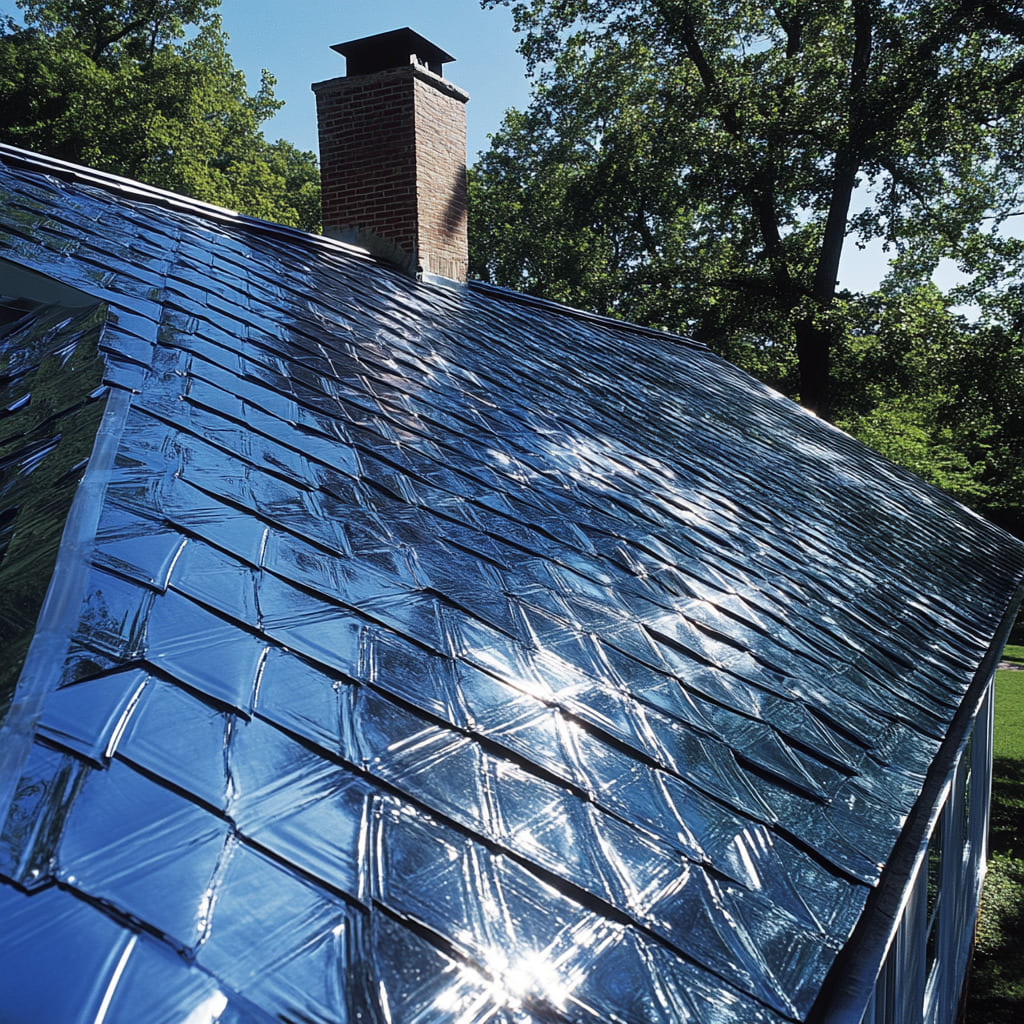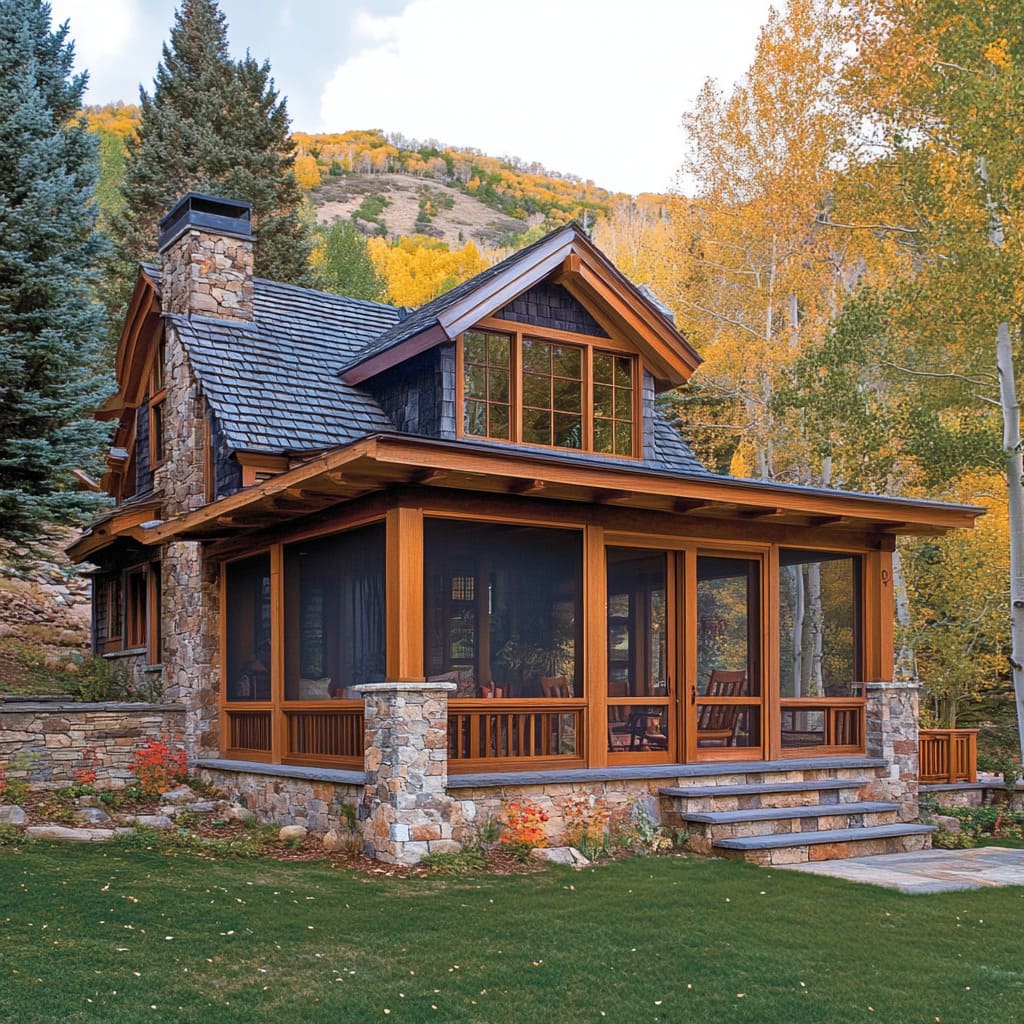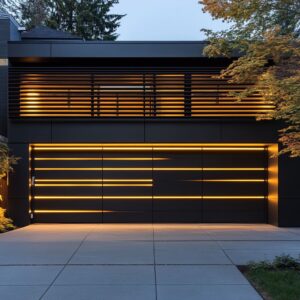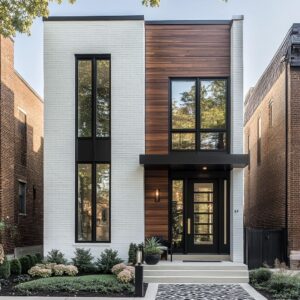Building a home in the United States isn’t as simple as picking a design and breaking ground. The country’s diverse climates, from frosty winters in the North to the humid heat of the South, create unique requirements for a structure’s durability, energy efficiency, and overall comfort.
Builders and homeowners alike need to think carefully about how the region will affect every aspect of construction, from foundation to roof. This article delves into essential construction elements for homes in Northern and Southern US regions, with practical insights that guide homeowners and builders in creating a house that thrives in its environment.
Foundation Choices: A Critical Starting Point
Understanding Foundation Types and Regional Considerations
The foundation is one of the most crucial elements in home construction, as it supports the entire structure. In the North, colder states like New Jersey and Michigan face challenges with frost heave—a condition where soil expands and contracts due to freezing and thawing cycles, which can cause severe foundation shifts.
To counter this, builders in colder climates generally prefer deep foundations that extend below the frost line, reducing the impact of frost heave on the home’s structural stability.
Northern Foundation Types: Deep Foundations and Basements
In colder regions, foundations are often poured by concrete contractors using concrete for its durability and resilience against harsh winter weather. In places like New Jersey, a concrete foundation built several feet below the frost line helps ensure stability even during the coldest months.
Basements are also common, as they provide additional living space, which is particularly useful in states with long winters. Additionally, a basement acts as a natural insulator, offering some protection against energy loss, making it an appealing choice in colder climates.
Southern Foundation Types: Slab-on-Grade and Raised Foundations
In contrast, the Southern states, including areas like Florida, Louisiana, and parts of Texas, face different challenges—especially humidity, frequent rainfall, and in some locations, a high water table. Due to these conditions, basements are uncommon.
Instead, slab-on-grade foundations are widely used, where concrete slabs are poured directly at ground level. This type of foundation minimizes exposure to moisture and is less expensive compared to deep foundations.
Raised foundations are another option in flood-prone areas, where homes are elevated to avoid water damage. This style is especially common in parts of the Gulf Coast.
Insulation: Adapting for Temperature Control
How Insulation Needs Vary by Climate
Effective insulation is crucial in both the North and South, though the reasons differ significantly. In the North, insulation is essential for retaining heat during the cold months, while in the South, the primary goal is to prevent heat from entering the home.
Northern Insulation Techniques: Batt Insulation and Spray Foam for Cold Protection
Northern states like Minnesota and Vermont experience frigid winters, making high-R-value insulation essential. Materials such as fiberglass batt insulation or spray foam are popular choices for attics and walls due to their high insulating capacity.
To further control indoor temperatures, insulating the basement walls and floors is common, as it prevents cold air from seeping into the living areas above. Double or triple-pane windows, often gas-filled for additional insulation, are also standard, providing an extra layer against heat loss and maintaining comfort indoors.
Southern Insulation Techniques: Reflective Barriers and Roof Ventilation for Heat Control
In Southern states, including Georgia and South Carolina, keeping interiors cool during scorching summers is a priority. Reflective insulation materials, like radiant barriers, are often used in attics to deflect heat away from the house, reducing the cooling load on HVAC systems.
Additionally, attic ventilation is critical for allowing hot air to escape, which prevents the home from absorbing excessive heat. Homeowners in these regions might also opt for Low-E glass windows, which limit the amount of infrared and UV light entering the home, keeping indoor temperatures manageable.
Roofing: Choosing Materials and Styles for Resilience
Climate-Specific Roofing Needs and Design
The roof is a home’s first line of defense against the elements, making the choice of materials and design crucial. Roofing must be tailored to withstand each region’s specific weather patterns, from heavy snow in the North to powerful storms in the South.
Northern Roofing: Snow Load Management and Ice Dam Prevention
For Northern states like New York and Maine, roofing materials must be strong enough to support significant snow loads, as well as steeply pitched to help snow slide off instead of accumulating. Asphalt shingles are a popular choice, as they’re durable, affordable, and well-suited for colder climates.
Builders also prioritize techniques to prevent ice dams, a phenomenon where ice builds up on the roof edges, blocking drainage and potentially causing leaks. Solutions like proper attic insulation, ventilation, and the installation of ice and water shields under the shingles are commonly employed to avoid costly winter damage.
Southern Roofing: Heat-Resistant and Storm-Resilient Choices
In the Southern regions, including Texas and Florida, roofs need to endure extreme heat and the occasional hurricane or tropical storm. Metal roofs, clay tiles, and concrete tiles are common choices due to their resistance to high temperatures and humidity.
Additionally, these materials are often impact-resistant, helping homes withstand flying debris during severe storms. Unlike steep Northern roofs, Southern homes may have a gentler pitch, which reduces wind lift and offers better resilience in storm-prone areas.
Roof Sealants: Extending the Lifespan of Your Roof
Regardless of the climate, roof sealants play an important role in maintaining the durability and effectiveness of a roof. By sealing gaps, cracks, and worn areas, these coatings can prevent leaks before they start, reducing the risk of damage and extending the roof’s lifespan.
In snowy climates, applying sealants to vulnerable areas can help manage ice dams, while in regions with high heat or frequent storms, sealants offer an extra layer of defense against moisture and impact damage. Different types of roof sealants, including silicone, acrylic, and rubber-based options, cater to specific needs. For example, silicone sealants are highly effective against UV rays and moisture, ideal for the sunny South, whereas rubber sealants work well in colder, wet environments.
Homeowners can choose from several application methods—liquid sealants for larger areas, caulking for precise sealing, and tapes for quick fixes. These options make it possible to address both minor repairs and comprehensive protective treatments, ensuring a well-maintained, long-lasting roof capable of withstanding regional challenges.
Windows and Doors: Balancing Light and Efficiency
Thermal Protection Through Windows and Doors
Windows and doors play a significant role in regulating temperature, and the design choices here reflect the need for either heat retention or cooling efficiency, depending on the region.
Northern Windows: Multi-Pane for Insulation
In Northern states like Michigan and Pennsylvania, where winters are particularly cold, homeowners often choose double or triple-pane windows. These windows may be filled with argon or krypton gas, which reduces thermal transfer and helps maintain a stable indoor temperature.
Well-insulated doors, often made from fiberglass or solid wood, are also favored as they offer a better seal against the winter chill.
Southern Windows: Low-E Coatings and UV Protection
In Southern states like Arizona and Nevada, windows need to block out the intense summer sun. Low-E (low-emissivity) coatings on windows reduce the amount of heat that enters the home by reflecting UV and infrared light.
Additionally, tinted glass and UV-blocking films are popular for managing sunlight without obstructing views. Doors with weather-resistant materials, like vinyl or treated wood, are ideal for withstanding humidity and preventing warping over time.
HVAC Systems: Optimizing Climate Control for Comfort
Regional Differences in HVAC Systems
Heating, ventilation, and air conditioning (HVAC) needs vary dramatically between Northern and Southern states, with systems tailored to cope with either extreme heat or severe cold.
Northern HVAC: Efficient Heating for Cold Climates
Northern states, like North Dakota and Wisconsin, experience long, cold winters, making efficient heating essential. Homes in these regions often use central heating systems powered by furnaces or boilers.
Some also employ zoned heating, which allows specific areas to be heated independently, saving energy by warming only occupied rooms. Programmable thermostats are also common, helping homeowners manage indoor temperatures even when they’re away from home, which can significantly lower heating costs.
Southern HVAC: Cooling and Dehumidifying for Hot, Humid Conditions
In states like Alabama and Mississippi, air conditioning is indispensable during summer. Southern HVAC systems typically include powerful AC units and dehumidifiers to handle both the high temperatures and the humidity.
Ceiling fans are a popular addition for extra cooling, and energy-efficient options, like smart thermostats, allow for precise temperature control that keeps cooling costs down. The combination of efficient cooling and humidity management is essential for comfort and health in these climates.
Moisture Management and Ventilation: Preventing Structural Issues
The Role of Moisture Control in Home Durability
Moisture is an ongoing concern in both the North and South, though its effects vary. While the South faces humidity-related challenges, the North contends with condensation and cold-driven moisture issues.
Southern Moisture Management: Combatting Humidity and Mold
In Southern states, such as Louisiana and Georgia, high humidity poses a risk of mold and mildew. Homes in these regions need effective ventilation, especially in bathrooms, kitchens, and basements.
Dehumidifiers are also popular to help manage indoor moisture levels, while moisture-resistant materials, like treated wood and vinyl, are used to prevent warping and decay.
Northern Moisture Management: Reducing Condensation
In Northern states, condensation can be a problem in winter as warm indoor air meets cold exterior walls. Builders employ strategies like vapor barriers, well-insulated windows, and heat recovery ventilation systems, which reduce indoor humidity without sacrificing warmth.
These solutions are vital for maintaining structural integrity and comfort in cold climates.
Landscaping and Exterior: Enhancing Durability and Functionality
Landscaping’s Role in Regional Building Success
Landscaping isn’t just for curb appeal—it’s also an essential factor in the home’s durability. Trees, plants, and grading work together to support the home’s resilience in different climates.
Northern Landscaping: Choosing Hardy Plants and Snow-Resistant Features
In Northern states like Colorado and Montana, landscaping must account for frost, snowfall, and short growing seasons. Homeowners often choose hardy plants that survive freezing temperatures.
Drainage is also important in snowy climates, with solutions like gravel paths and retaining walls that help control meltwater flow and prevent water damage near the home’s foundation.
Southern Landscaping: Shade Trees and Flood-Resistant Design
In states like Florida and Texas, landscaping focuses on shading and flood prevention. Shade trees help keep the home cool by blocking direct sunlight, reducing indoor temperatures.
Additionally, landscape grading and flood-resistant materials are essential in areas prone to heavy rain, ensuring water doesn’t pool near the home’s foundation.
Conclusion: Building a Home for Long-Term Comfort and Durability
Homes across the US require different approaches to thrive in their local climate. By considering the unique demands of each region—from concrete foundations in the North to storm-resistant roofs in the South—builders can create comfortable, lasting homes suited to each environment.
Whether you’re in a snowy, northern state or a hot, humid southern region, understanding the impact of climate on every part of your home is key to building something that stands the test of time.

